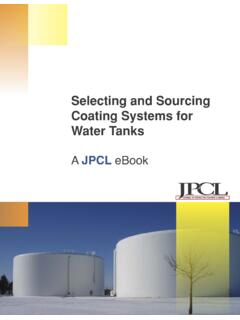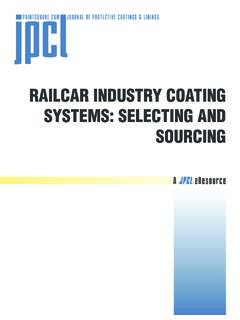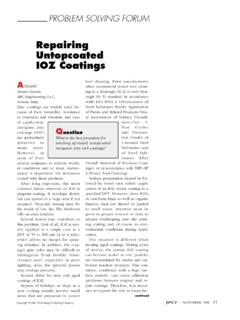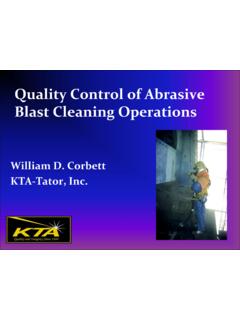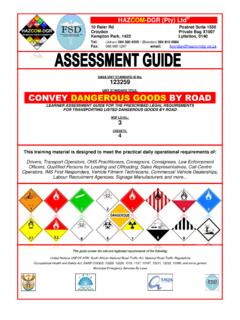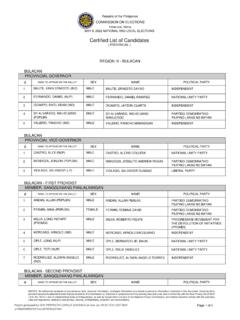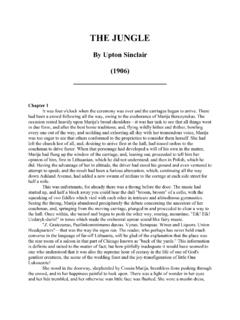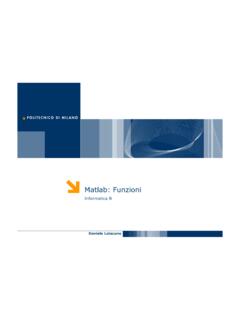Transcription of Comparisons of Epoxy Technology for Protective Coatings ...
1 Copyright 2000, Technology Publishing CompanyEpoxy Resin TechnologyThere are three types of Epoxy resins that find applicationin wastewater treatment facilities: bisphenol A, bisphenolF, and novolac resins. These resins all result from reac-tions of epichlorohydrin with phenolic compounds. Thetype and number of phenolic groups determine bothphysical and performance properties of the cured A Resin StructureBisphenol A is a reaction product of phenol and A is reacted with epichlorohydrin to formdiglycidylether bisphenol A resin or DGEBA. The resul-tant Epoxy resin is a liquid with a honey-like is most often used in solvent-free Coatings andflooring systems. The molecular weight of the formulation is increasedby adding more bisphenol A to liquid DGEBA to formsemi-solid or solid resins.
2 These resins are cut in solventto allow their use as maintenance primers for steel or ascorrosion-resistant films. The higher the molecular weight is, the higher the vis-JPCL May 200049 Comparisons of EpoxyTechnology for ProtectiveCoatings and Liningsin Wastewater FacilitiesBy John D. Durig, General Polymers, Cincinnati, Ohio, USAC omparisons of EpoxyTechnology for ProtectiveCoatings and Liningsin Wastewater FacilitiesEditor s Note: This article was first presented at SSPC 99, The Industrial Protective Coatings Conference and Exhibit, November 14-18, 1999, in Houston, TX, USA, and published in The Proceedings of the Seminars, SSPC 99-14, pp. Technology and methods of curing andreacting with amine-based hardeners havecontinued to evolve since the first Epoxy patents were is-sued in the 1930s.
3 The possible reactions combined withwide-ranging formulation additives have resulted in a myri-ad of products that can easily confuse decision makerswhen it comes to product selection. Adding to the confu-sion is the wide range of environmental factors that mustbe considered when choosing a Protective coating article will identify the primary differences be-tween three types of epoxies and four types of amine-based hardeners typically used in Coatings for wastewatertreatment facilities. A brief description of chemical struc-ture will assist those with some chemistry background,but the important issue is the performance derived fromeach specific chemistry. After the discussion of perfor-mance, combinations of Epoxy resins and curing agentssuitable for specific structures and areas in wastewater fa-cilities will be identified.
4 Finally, to assist decision makersin selecting the right products, a simple method utilizingmaterial safety data sheets (MSDS) will be tank at a wastewater plant. Bis F Epoxy resin with an aliphatic or acycloaliphatic amine curing agent is appropriate.(Photos courtesy of the author)Copyright 2000, Technology Publishing Companycentipoises [cP]) that of bisphenol Aresins. Additionally, there is a higherproportion of trifunctional Epoxy mol-ecules, which increases the function-ality available for crosslinking to Epoxy ResinsNovolacs are modifications of bisphe-nol F resins formed using excess phe-nol. Bisphenol F is the simplest novolac resin, but shouldnot to be confused with its related higher functionalityanalogs.
5 Its functionality and performance properties arequite different than true novolacs. Bisphenol F epoxyresin performance in wastewater treatment facilities isbetween bisphenol A Epoxy resin and true novolac. Forthe purpose of this article, bisphenol F Epoxy resin willbe considered its own class. This will be an important is-sue for decision makers; some manufacturers do not dis-tinguish between bisphenol F and other novolac epoxyresins. Not distinguishing between the two resins can re-sult in using a product that does not perform adequatelyor buying a more expensive and more durable systemthan the exposure environment viscosity of novolac resins is significantly higherthan that of bisphenol F resins.
6 As important, the func-tionality is considerably greater. The higher viscosity andgreater functionality of the novolacs make their heat andchemical resistance properties superior to those ofbisphenol F. Table 1 summarizes the key chemical prop-erties of the Epoxy resins Differences among Bisphenol A, Bisphenol F,and Novolac ResinsBisphenol A Epoxy resin is the workhorse resin for themajority of chemically curing Epoxy Coatings for concreteand steel. It is used extensively because of its excellentadhesion, toughness, wear resistance, and chemical resis-tance. Bisphenol F resins have been steadily gaining groundin civil engineering applications because of their resis-tance to a wider range of chemicals.
7 There are twomain reasons for their chemical resistance , bisphenol F systems have slightly higher function-ality than bisphenol A. The higher functionality pro-vides more reaction sites, leading to a tighter and morethree-dimensional crosslink density. Crosslink densitydetermines chemical resistance. Second, relative tobisphenol A resins, bisphenol F resins have lower vis-cosity. Lower viscosity means fewer additives and dilu-JPCL May 200050 Novolac50420,000-50,000 weightViscosity @ 25 C (77 F)Epoxide equivalent weightFunctionalityDGEBA37011,000-15,000 ,500-5,000 1:Typical Epoxy Propertiescosity and functionality of the resin are. Therefore, in-creasing molecular weight brings the resin to a consisten-cy that requires solvent to allow for application to thesubstrate.
8 Functionality is fundamentally the number of sitesavailable for reaction with curing agents. More reactivesites per molecule result in a tighter and more three-di-mensional crosslink density. Increasing functionality thusincreases strength and chemical resistance, thus allowingthe resins to be used in maintenance F Resin StructureBisphenol F is similar to bisphenol A except phenol is re-acted with formaldehyde rather than acetone. The resul-tant phenolic chemical does not have the two methylgroups that are present between the ring structures inbisphenol A resins. Bisphenol F is reacted with epichloro-hydrin to form diglycidylether bisphenol F (DGEBF)resins. Because of the missing methyl groups, the viscosi-ty of bisphenol F resins are typically 1/3 (2,500-5,000 Secondary containment at a wastewater treatment facility.)
9 An epoxynovolac resin or a Bis F Epoxy resin is appropriate along with acycloaliphatic amine curing 2000, Technology Publishing CompanyAmine-BasedEpoxy Curing AgentsFor most Coatings , the ambient tem-perature curing requirements demandthe use of amine-based curing the Epoxy resin selection setssome limits on performance, the typeof curing agent provides significantperformance enhancements. Under-standing the chemistry of basic curingagents will assist in recognizing theperformance differences they classes of amine hardeners in-clude aliphatic amines, polyamides and amidoamines, cycloaliphatic amines, and aromatic Aminesand their ModificationsAliphatic ethylene amines were thefirst amine hardeners used in epoxycoatings.
10 They are simple commoditychemicals that were available to reactwith epoxies. They include aminoethyl piperazine (AEP),diethylene triamine (DETA), ethylene diamine (EDA), andtriethylene tetramine (TETA). The benefits of using theseamines include high reactivity (fast cure) at ambient tem-perature and excellent solvent resistance because of theirhigh functionality. Disadvantages such as limited flexibili-ty and inefficient chemical reaction with the Epoxy resin,which leads to surface carbonation or blushing, have rele-gated these amines to an additive status in their purestate. Modifications such as adduction or pre-reactionwith a small amount of Epoxy overcome flexibility prob-lems and improve compatibility with Epoxy resins to re-duce surface defects.


